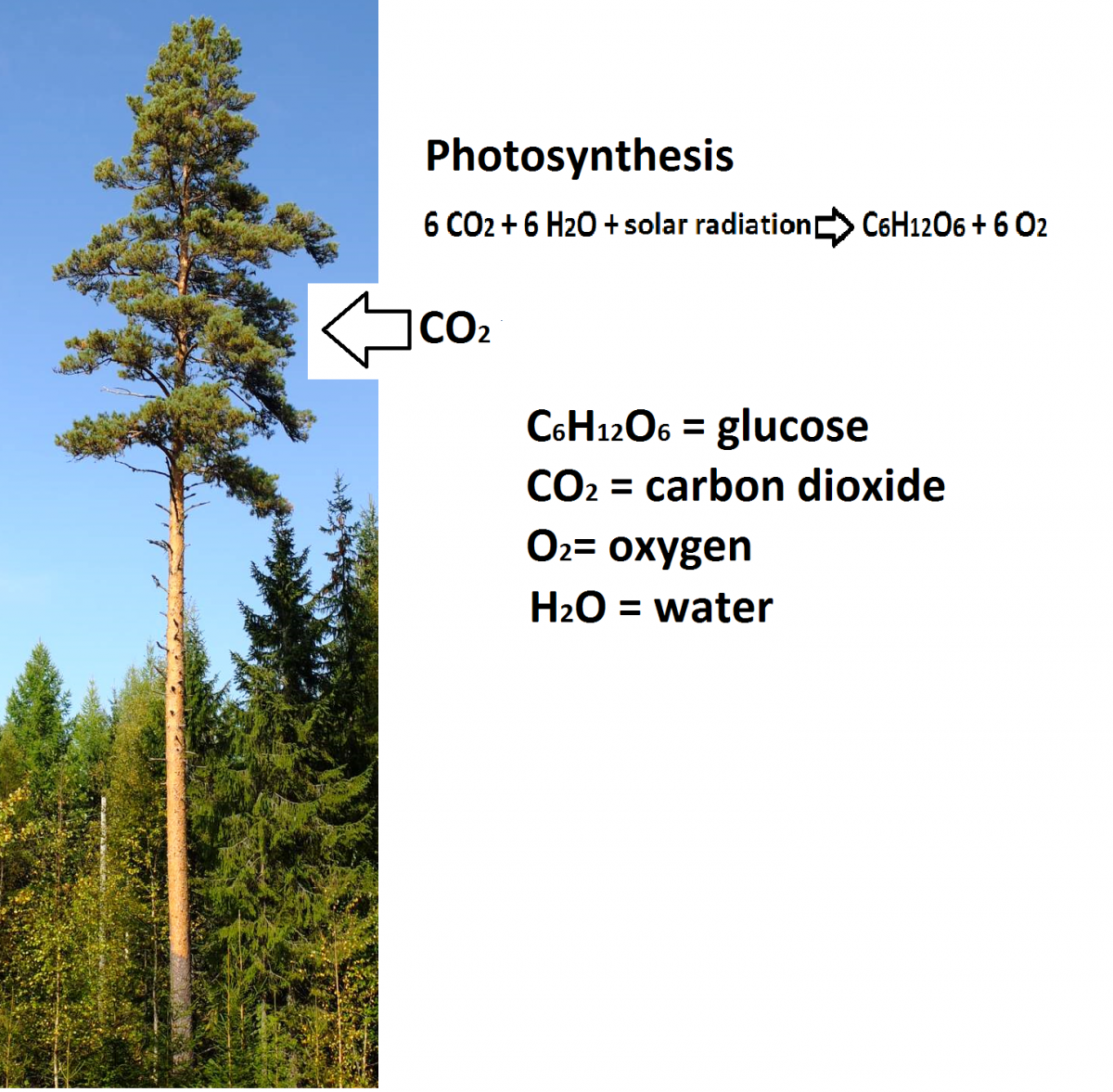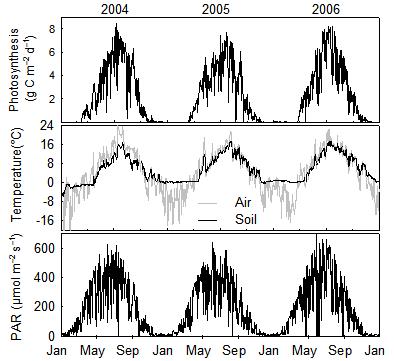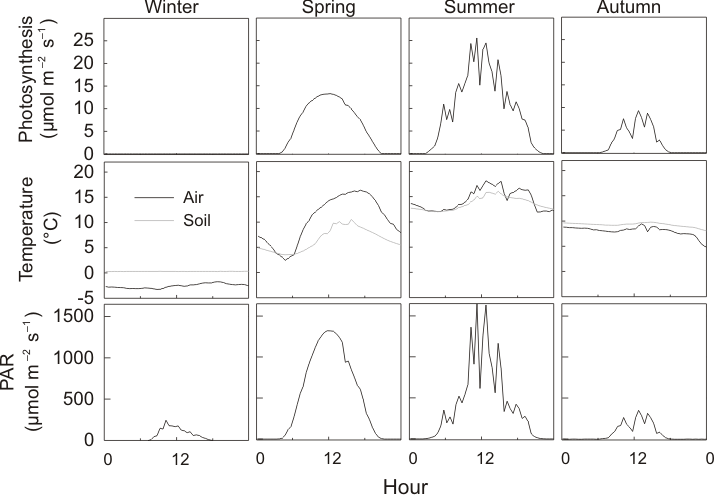Photosynthesis is the most fundamental process in plants because it provides raw material for growth and stores energy for later use in vital functions. In photosynthesis, the energy of solar radiation is converted into chemical form using atmospheric carbon dioxide and soil water. Meanwhile, oxygen is released into the air. The exchange of gases between the plant and the atmosphere happens via the stomata.
Photosynthesis of a tree canopy is driven by the total leaf area (LAI), photosynthetically active solar radiation (PAR) and CO2 concentration (i.e. photosynthesis usually increases with an increment in these – at least up to a point). Low air humidity (VPD), low air temperature and low soil moisture (REW) restrict photosynthesis. The individual effects are explained in detail in the article called How to model photosynthesis.
In the summer, the daily pattern of photosynthesis mainly follows the changes in light (i.e. uptake is intense in light and prevented in the dark). However, other environmental factors may restrict the light prescribed rate of photosynthesis. For example, photosynthesis in a warm summer morning may rise together with the light intensity, but in the afternoon, the air humidity becomes too low for the plant. To prevent excessive evaporation, the plant closes the stomata, which limits the flow of carbon dioxide in the leaves; thereby photosynthesis. In that case, photosynthesis is lower in the afternoon than in the morning in similar light intensities.
Plants are dynamic and they are able to regulate the operation of photosynthetic machinery quickly. However, trees also follow the slow changes according to environmental factors. The annual cycle of photosynthesis follows the pattern of slow changes in temperatures. For example, a plant protects the photosynthetic machinery from the frosts in spring after only short periods of favourable temperatures and does not let the machinery operate on full capacity. Therefore, similar radiation intensity in similar momentary temperatures causes a doubled photosynthesis in summer compared with spring.
Plants dynamically regulate biochemical processes, such as photosynthesis. In practise, the action is not always in optimal equilibrium, but it rather involves the continuous change of environmental conditions.
Read more on how to measure and model photosynthesis. You can also explore observations of photosynthesis made at Hyytiälä Forestry Field Station.
Photosynthesis is widely discussed in the book: Hari P, Heliövaara K, Kulmala L (Eds.) 2013. Physical and Physiological Forest Ecology. Springer Science+Business Media



